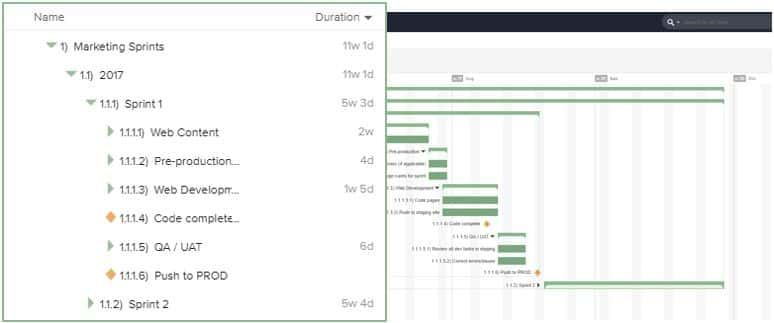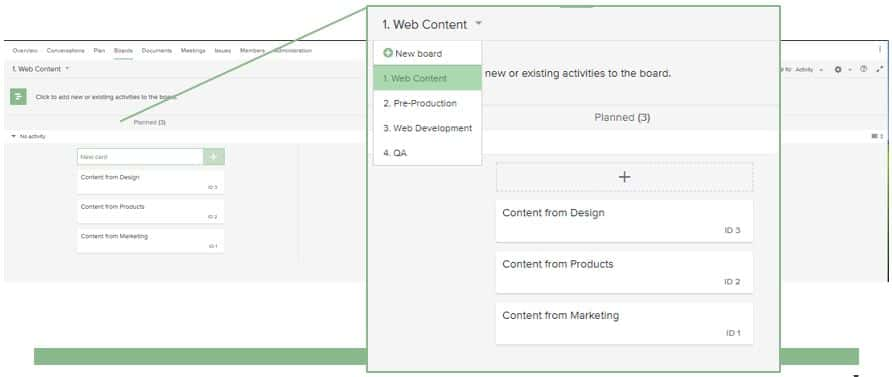
Digital marketing project management can be challenging because we constantly have an ongoing, lengthy to-do list. We add to the list within our own department, but we also receive website update requests from other departments. Our to-do list grows daily and is difficult to manage, with priorities constantly shifting and schedules having to be rearranged.
In the past, we lacked visibility. There wasn’t a single point person who received and organized requests; the expectation was that anything sent to the department would get done immediately, which resulted in chaos. Before getting organized with Projectplace, I used Microsoft Project, which is a lot more complex and not very intuitive. It’s basically like a huge, complicated spreadsheet. It was easy to make mistakes, and didn’t provide a way to see comments and edits that other people made. It was difficult to track multiple users collaborating on a project.
Now, I use ProjectPlace every day. Mainly, I use the Plan feature for each sprint. I plan out different subtasks beneath each larger task, so I have something to tie the cards to. Before each sprint starts, my manager and I will go through the request board for our department and see what projects we can include in the next sprint. We also look at requests received from other departments and try to fit those in when we can. Basically, we use ProjectPlace as a way to keep our tasks organized, since we are constantly updating and refreshing the website.
ProjectPlace keeps me organized and on schedule. In My Overview, I can see real-time statuses without having to go to each board. I can see everything coming up and past due at a high level. I frequently use the @ reference feature, which cuts out hundreds of emails and lets me communicate more efficiently with the team.
I especially love the Dependencies feature. It’s often the case that the progress of one card will depend on completion of another, and Dependencies makes it really easy to keep track of each individual card and how it’s moving along its timeline.
My main tip to project managers getting started is to make an outline and use the Plan or Roadmaps feature—plan out whatever project you’re working on, and have a kickoff meeting to make sure your team is on the same page in terms of what you’re going to use. After that, it should be (relatively) smooth sailing!
I invite you to try the ProjectPlace Digital Marketing Template (and check out the blog, “ProjectPlace Workspace Template Library is Here,” for a look at all the available templates). Start a free trail and take it for a test drive. It offers a plan and boards so you can work smarter, not harder, in your digital marketing project management.
To learn how ProjectPlace can benefit each department in your organization, check out the following use-case blogs, covering: Public Relations, Human Resources, Blog Management, Cross-Department Communication, Demand Generation Marketing, Event Management, Digital Marketing, Customer Renewals, RFP Project Planning, Sales Team Collaboration, Customer Experience, Solutions Marketing, and Sales Project Management.







